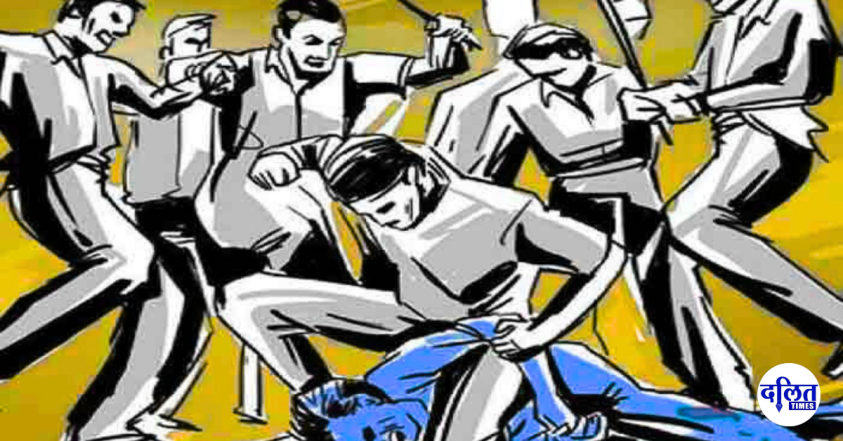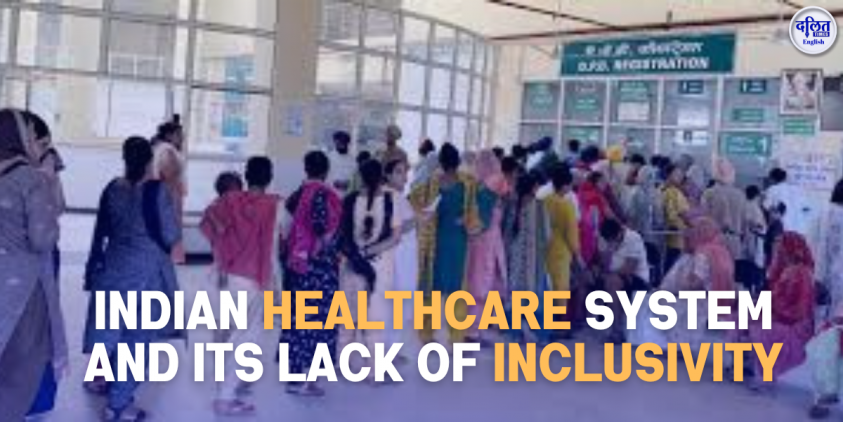The cccused- sanjay Thakor along with others dragged the Dalit man to a public place- assaulted him brutally-stripped him- recorded videos- paraded on roads by dominant castes- sexual violence, moral policing, and caste hatred form a deadly alliance.
A 32-year-old Dalit man was subjected to a horrific public punishment on the night of March 11, 2025, in Vadol village near Idar, Sabarkantha district, Gujarat. He was beaten, stripped naked, and paraded through the village by a group of dominant caste Thakor men.
It was a premeditated caste atrocity, a public spectacle of humiliation orchestrated to reassert caste hierarchy. It was a display of caste masculinity, using sexualised violence and social exclusion as tools of discipline. This is not a new story. It is the story of caste India—retold through naked bodies, bleeding wounds, and silent laws.
Not an Outburst, But a Performance of Caste Power
The accused, Sanjay Ishwar Thakor, along with other dominant caste men, allegedly dragged the Dalit man to a public space near the village temple—a site loaded with symbolic power—and assaulted him brutally. They stripped him, recorded videos of his humiliation, and forced him to sign a written undertaking never to return to the village this leads modern form of transportation.
The video surfaced two days after the incident, and only then did the local police initiate formal action. The delay is telling the truth when Dalits are assaulted, it is rarely met with immediate institutional response. Only viral visibility not legal responsibility to triggers state action.
What is most relevant is that this was a planned punishment, not a spontaneous act. It reflects an entrenched social script, where caste “justice” is meted out not in courtrooms, but in village squares. The camera is not just a witness—it is a weapon, a tool to circulate humiliation, to warn others, to instill fear.
A Culture of Silence and Delayed Justice
The victim, out of terror, initially told doctors that he had “fallen down the stairs.” This fabricated self-harm narrative is not uncommon in caste atrocities. It mirrors what Dr. B.R. Ambedkar called the “graded inequality” of caste—a system where even the oppressed internalise fear, and trauma must be masked as accident.
Medical officers failed to file a medico-legal case (MLC). There was no police report until public outrage forced action. This is a structural failure. It reveals the complicity of institutions—medical, legal, administrative—in sustaining caste impunity.
15 persons have been booked in this incident under the Scheduled Castes and Scheduled Tribes (Prevention of Atrocities) Act, 1989, and various sections of the Bharatiya Nyaya Sanhita (BNS). But how many similar cases go unregistered every year? How many victims suffer in silence without video “proof”? The law is present—but often dormant, or active only after irreparable damage.
Gujarat’s “Development” Masks a Deep Caste Divide
Gujarat is often paraded as India’s “model of development.” But for Dalits, especially in rural districts, development has not meant dignity. According to the NCRB 2022, crimes against Scheduled Castes rose by 13.1% nationally, with Gujarat consistently reporting high levels of caste-based violence. Incidents range from forced social boycotts, manual scavenging deaths, denial of entry into temples, to killings over inter-caste relationships.
The Thakor community, numerically and politically dominant in north Gujarat, has historically asserted control through caste panchayats and informal policing mechanisms. The Vadol incident fits within this pattern—a community ‘disciplining’ a Dalit man for violating caste-defined sexual and spatial norms.
Sexuality, Patriarchy, and the Weaponisation of Honour
What about the woman involved? Predictably, the narrative renders her invisible. Her autonomy is erased, her voice unheard. Whether consensual or not, the discourse is not about her rights or choices. It is about
The cccused- sanjay Thakor along with others dragged the Dalit man to a public place- assaulted him brutally-stripped him- recorded videos- paraded on roads by dominant castes- sexual violence, moral policing, and caste hatred form a deadly alliance.
A 32-year-old Dalit man was subjected to a horrific public punishment on the night of March 11, 2025, in Vadol village near Idar, Sabarkantha district, Gujarat. He was beaten, stripped naked, and paraded through the village by a group of dominant caste Thakor men.
It was a premeditated caste atrocity, a public spectacle of humiliation orchestrated to reassert caste hierarchy. It was a display of caste masculinity, using sexualised violence and social exclusion as tools of discipline. This is not a new story. It is the story of caste India—retold through naked bodies, bleeding wounds, and silent laws.
Not an Outburst, But a Performance of Caste Power
The accused, Sanjay Ishwar Thakor, along with other dominant caste men, allegedly dragged the Dalit man to a public space near the village temple—a site loaded with symbolic power—and assaulted him brutally. They stripped him, recorded videos of his humiliation, and forced him to sign a written undertaking never to return to the village this leads modern form of transportation.
The video surfaced two days after the incident, and only then did the local police initiate formal action. The delay is telling the truth when Dalits are assaulted, it is rarely met with immediate institutional response. Only viral visibility not legal responsibility to triggers state action.
What is most relevant is that this was a planned punishment, not a spontaneous act. It reflects an entrenched social script, where caste “justice” is meted out not in courtrooms, but in village squares. The camera is not just a witness—it is a weapon, a tool to circulate humiliation, to warn others, to instill fear.
A Culture of Silence and Delayed Justice
The victim, out of terror, initially told doctors that he had “fallen down the stairs.” This fabricated self-harm narrative is not uncommon in caste atrocities. It mirrors what Dr. B.R. Ambedkar called the “graded inequality” of caste—a system where even the oppressed internalise fear, and trauma must be masked as accident.
Medical officers failed to file a medico-legal case (MLC). There was no police report until public outrage forced action. This is a structural failure. It reveals the complicity of institutions—medical, legal, administrative—in sustaining caste impunity.
15 persons have been booked in this incident under the Scheduled Castes and Scheduled Tribes (Prevention of Atrocities) Act, 1989, and various sections of the Bharatiya Nyaya Sanhita (BNS). But how many similar cases go unregistered every year? How many victims suffer in silence without video “proof”? The law is present—but often dormant, or active only after irreparable damage.
Gujarat’s “Development” Masks a Deep Caste Divide
Gujarat is often paraded as India’s “model of development.” But for Dalits, especially in rural districts, development has not meant dignity. According to the NCRB 2022, crimes against Scheduled Castes rose by 13.1% nationally, with Gujarat consistently reporting high levels of caste-based violence. Incidents range from forced social boycotts, manual scavenging deaths, denial of entry into temples, to killings over inter-caste relationships.
The Thakor community, numerically and politically dominant in north Gujarat, has historically asserted control through caste panchayats and informal policing mechanisms. The Vadol incident fits within this pattern—a community ‘disciplining’ a Dalit man for violating caste-defined sexual and spatial norms.
Sexuality, Patriarchy, and the Weaponisation of Honour
What about the woman involved? Predictably, the narrative renders her invisible. Her autonomy is erased, her voice unheard. Whether consensual or not, the discourse is not about her rights or choices. It is about
By Bindu Ammini | Dalit Feminist



